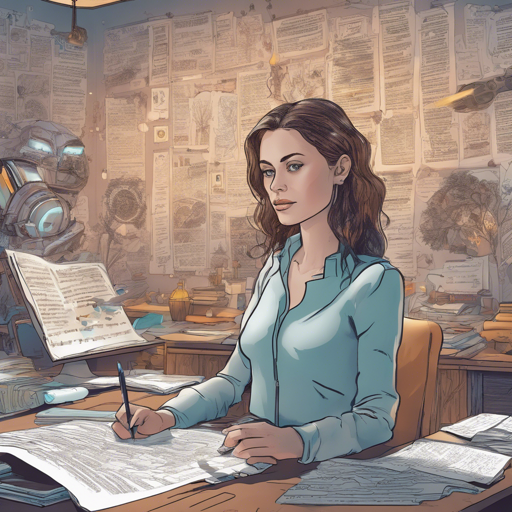Are you looking to elevate your storytelling skills and create the vibrant worlds and intricate plots that will captivate your readers? With Gemma-The-Writer-9B, an advanced AI model tailored for fiction writing, your journey into storytelling can be both creative and structured. Below, we’ll explore how to leverage this powerful tool to create intriguing narratives across various genres.
Getting Started with Gemma-The-Writer-9B
The Gemma model is an impressive merge of several top storytelling models, making it not only versatile but powerful for writers of all kinds—be it sci-fi, romance, horror, or anything in between. Here’s how to utilize it effectively:
- Model Setup: Ensure you have the GEMMA Instruct template and that you are familiar with the context window settings—8k as standard, expandable up to 32k using rope.
- Fine-tuning Parameters: Utilize a Rep Pen of 1.05 or higher for optimal outputs. Adjust the temperature settings within the range of 0-5 based on the creativity level you wish to achieve.
- Starting Your Story: You can prompt the model with a range of story ideas, setting the tone and genre to suit your vision.
Creating Engaging Outputs
Once you’ve set up, you’re ready to create stories ranging from heartfelt tales to thrilling narratives. Here are a couple of examples you can build upon:
Example #1: Sci-Fi Isolation
Imagine a story titled The Last Transmission, where a lone astronaut, Captain Eva Rostova, finds herself trapped in a dying spaceship. The narrative can explore the themes of isolation, sacrifice, and human connection, wrapping it up within an emotionally charged dialogue shared with her lost crew and family. With strong detail and atmosphere, this poignant tale dives deep into the psyche of a character facing the void.
“This is Captain Eva Rostova, *Vanguard*… Last transmission... All other crew deceased…”Such pivotal moments can evoke emotion, making readers reflect on the fragility of connection in the face of perceived isolation.
Example #2: Apartment Horror
In another vivid creation, your work might explore a surreal horror scene with visceral details. A character might find themselves trapped in an office on the 21st floor where reality starts to bleed into a horror nightmare—a shattered window unleashes a hellish scene of tendrils and chaos, provoking their instinct to survive. Each thought, fluttering emotion, and detail should build suspense, painting a picture that pulls readers into the heart of the chaos.
The skyscraper sways, and I watch the window in front of me on the 21st floor explode outward in a shower of glass...Troubleshooting Common Issues
As with any AI-driven model, users might encounter certain challenges while generating text. Here are some troubleshooting tips:
- Low Output Quality: Adjust the temperature settings to encourage more creativity, or revise your prompt to be more specific in your genre or scene setting.
- Unexpected Themes: If the model strays from your intended story arc, fine-tune the initial input sentence or provide additional context.
- Enhanced Engagement: Include specific character traits or settings to guide the narrative structure.
- Model Stability: Ensure that your technical setup and configurations are according to the recommended guidelines to maintain optimal performance.
For more insights, updates, or to collaborate on AI development projects, stay connected with fxis.ai.
Final Thoughts
At fxis.ai, we believe that such advancements are crucial for the future of AI, as they enable more comprehensive and effective solutions. Our team is continually exploring new methodologies to push the envelope in artificial intelligence, ensuring that our clients benefit from the latest technological innovations.
By experimenting with the Gemma model, aspiring authors can unlock a world of narrative possibilities, enriching their storytelling with depth and creativity. So gear up your imagination, harness the power of AI, and dive into the enchanting realm of fictional storytelling today!

